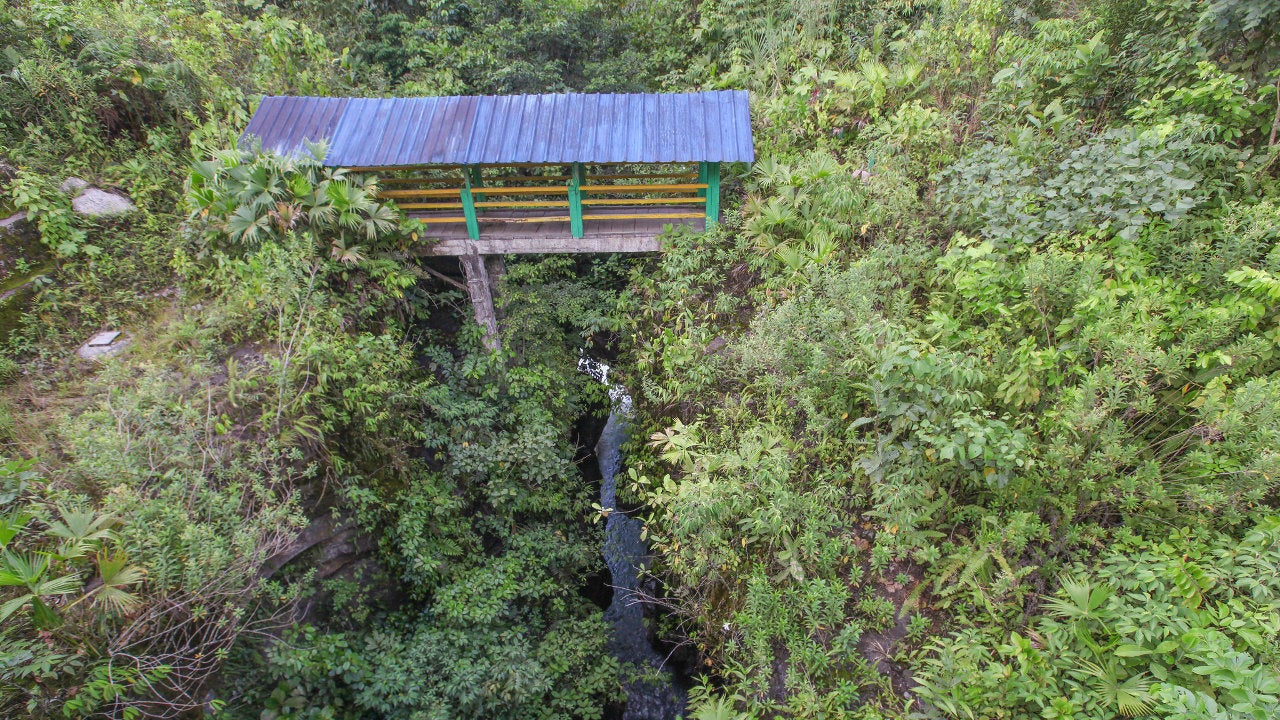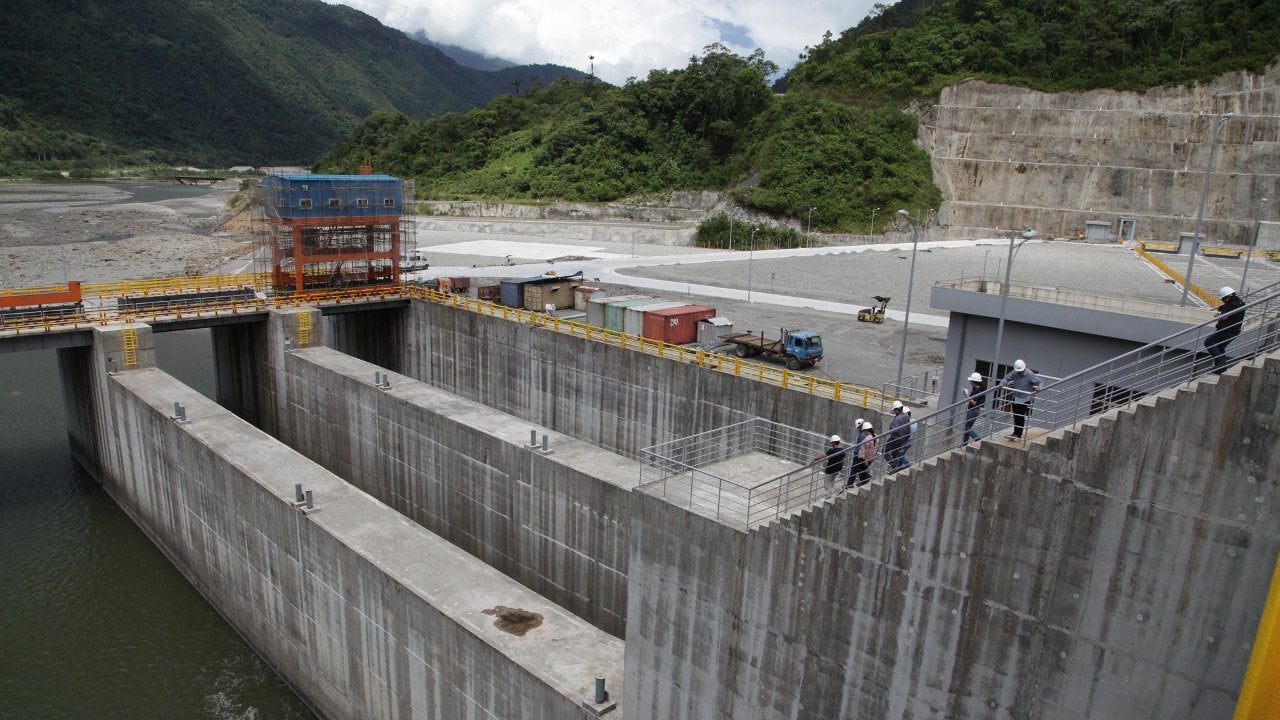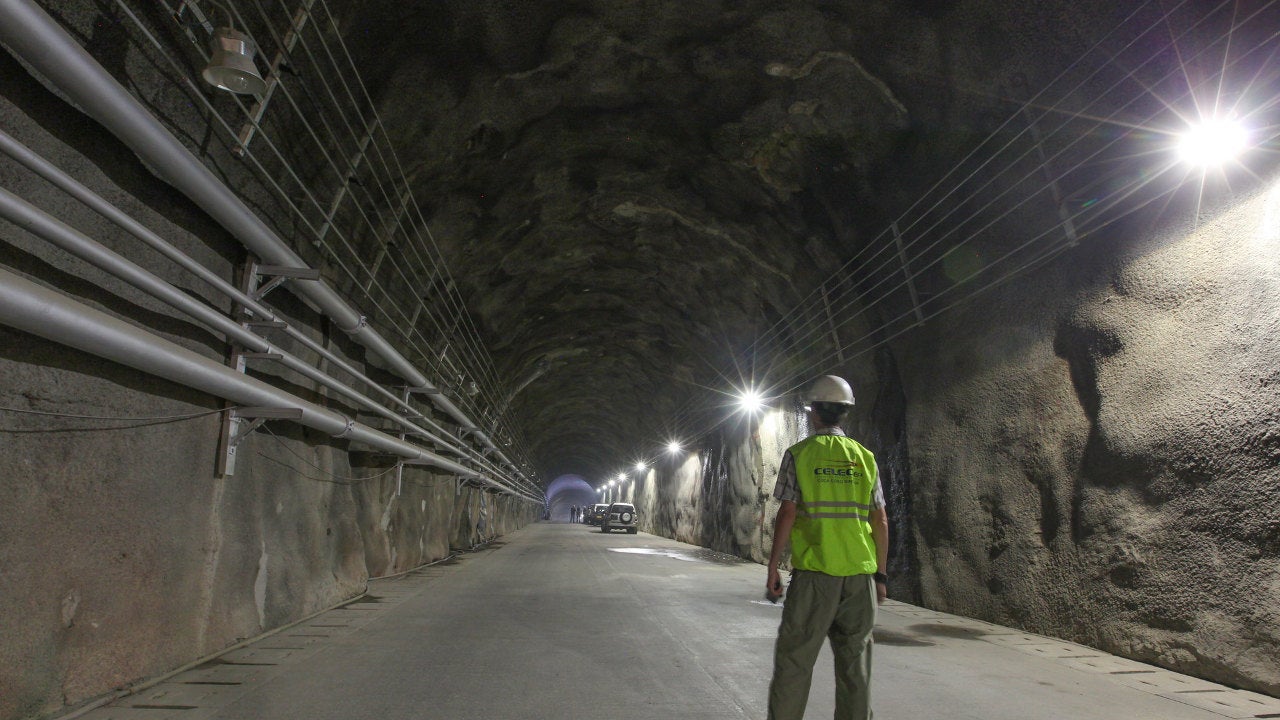The Coca Codo Sinclair hydroelectric facility is the largest energy project in Ecuador’s history. Located in the Amazon Basin, 100km east of Ecuador’s capital Quito between the provinces of Napo and Sucumbíos, the 1,500MW project is a run-of-river development on the Coca River.
The plant’s eight turbines will produce 8.8 billion kWh per annum, supplying 35% of the country’s overall electricity consumption and saving about two billion litres of imported diesel for thermal power plants per year.
Backed by strong political will, the project was promoted as a centrepiece of the new energy plan in Ecuador, which aims to replace thermoelectric energy from fossil fuels with renewable hydroelectric energy, and the import of energy from Peru and Colombia with self-sufficient energy production from renewable sources.
The developer and owner of the project is Cocasinclair EP (Coca Codo Sinclair EP), a state-owned special-purpose enterprise established in 2010.
The construction of the $2.6bn project started in 2010 and was completed by November 2016, creating 8,000 jobs. It will also reduce CO₂ emissions by 4.5 million tonnes a year.
A tunnel collapse at the plant construction site killed 13 people and injured 12 in December 2014. It also caused partial damage to the high-pressure pipes inside the engine room.
Coca Codo Sinclair project details
The Coca Codo Sinclair hydroelectric project was proposed in the early 1980s but could not be implemented because of the Reventador volcanic eruption in 1987 and financial constraints.
In 2007, Ecuador President Rafael Correa restarted the project and Italian company Electroconsult was contracted for a new feasibility study.
In February 2008, Coca Codo Sinclair SA was established as a joint venture company between Ecuador’s state-owned power company Termopichincha, 70%, and Energia Argentina (Enarsa), 30%.
Ecuador then bought the entire stake of Enarsa for $5.5m in September 2009. State-owned company Cocasinclair EP was later established for the development of the project.
Coca Codo power plant financing
Coca Codo was financed through debt, 63%, and equity, 37%. The Export-Import Bank of China granted a $1.68bn loan payable in 15 years, with the remaining funds provided by the Ecuador Government.
Hydropower facility construction
The access road to the powerhouse was completed in October 2012. A stretch of a heavy crude oil pipeline, intersecting the project site, was already relocated.
Initial engineering works included the construction of the water intake area, powerhouse and tunnelling.
Hydroelectric plant design and water intake
The project is being developed in an area where the Coca River flows in a great curve at a natural slope of 620m.
The water intake complex is located on the Coca River, 1km downstream of the confluence of the Quijos and Salado rivers. It comprises a concrete face rockfill dam built on the existing river channel, a concrete spillway built on the left bank of the river, and the sedimentation basin and intake built between the dam and spillway.
Any water diverted from the intake passes via the 120m-long sedimentation basin to run through a 24.8km-long concrete-lined headrace tunnel, with an excavation diameter of 9.1m, into the compensating reservoir, which has a usable volume 800,000m³.
Water from the compensating reservoir is fed through two 1,900m-long penstocks to the eight Pelton turbines installed in the underground powerhouse, which measure 26m x 50m x 192m. A parallel cavern of 16.5m x 33m x 192m houses 24 single-phase transformers of 68.3 MVA each and a 500kV substation.
The access path to the powerhouse is 495m long, 6.5m wide and 7.5m high. A tailrace tunnel delivers water back to the Coca River.
Technology used for Ecuador hydroelectric project
The hydroelectric project is designed to use a 620m-high natural waterfall with a maximum regulated flow of water of 278m³/s.
Coca Codo’s run-of-river intake has a maximum capacity of 7,500m³/s. The sedimentation basin has six bays and a design sediment particles size of 0.25mm, while the maximum derived flow in the headrace tunnel is 222m³/s.
Two penstocks with vertical shaft and horizontal reach feed the water from the compensating reservoir to the eight generating units of the plant.
In addition, the power plant is equipped with eight six-nozzle vertical Pelton turbines, each with a rated output of 187.7MW. Each turbine is powered by a runner with 22 buckets with a width of 835mm.
Coca Codo Sinclair contractors
The bid documents for the Coca Codo Sinclair project were developed by Hogan & Hartson, a law firm based in Washington DC, US.
Sinohydro-Andes JV won the engineering, construction and procurement (EPC) contract for in October 2009. It is a consortium of Chinese company Sinohydro, 89%, Ecuadorian company Coandes, 8%, and consulting companies Yellow River and Geodato with 3%.
A 66-month $72.4m management and inspection contract was awarded in April 2011 to a Mexican-Ecuadorian consortium, consisting of Mexico’s state-owned power company Comision Federal de Electricidad (CFE), three engineering consultancies and Ecuador’s Consultora Vera y Asociados and Ingenieros Consultores Asociados.
Chinese company Harbin with Andritz Hydro was awarded the contract to supply the electromechanical equipment, as well as eight Pelton runners, one spare runner and 48 nozzles. The company also provided the hydraulic concept and the model test.
Nexans was contracted to supply extra-high-voltage power cables to connect the project to the local power network in May 2013.
Sinohydro contracted Sedicon in April 2014 to provide sediment removal equipment for the desanders. The contract included 40 SediCon Sluicer units that remove more than 5.44 million tonnes of sediments a year.
Marti Norge supplied a 26.9m conveyor system, while Holcim supplied cement.
Power distribution
The Coca Codo Sinclair plant is connected to the National Interconnected System (NIS) of Ecuador, which distributes energy throughout the country.
The power generated from the plant is delivered to the national grid through two 500kV transmission lines, one of which runs from Cocasinclair substation to the El Inga substation, which is connected to the NIS.
The project will reportedly affect approximately 2,000 people. The major controversies are that it will render the San Rafael Falls, the tallest waterfall of Ecuador, dry and that the road constructions to the project site have led to deforestation in the UNESCO Sumaco Biosphere Reserve.





